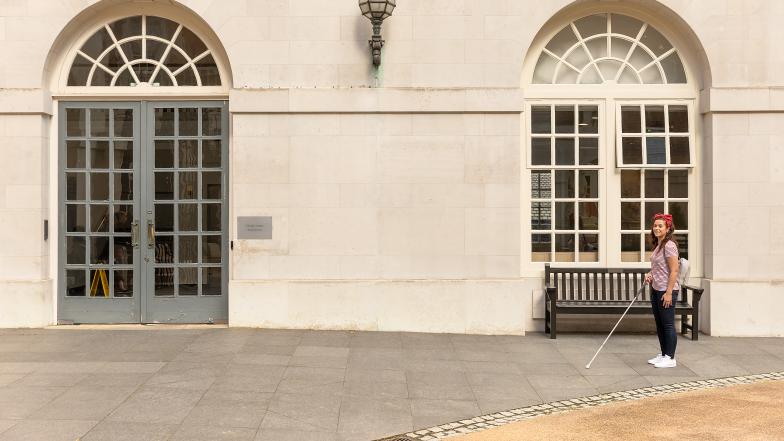Diagonal technique with your long cane
The following checklist is a guide for existing cane users to using the diagonal technique with your long cane. This technique is useful when moving around indoors or when you may need some extra protection.
We have put together these tips to refresh, or be used alongside, the skills you have already learnt. If you are new to long cane training or would like to know more about the benefits, please contact your local authority’s sensory team before practising or using these techniques.

The diagonal technique
- Stand tall, with your head up and your shoulders back.
- Practise using your long cane in both your left and right hand. Being able to use both hands is helpful for when you need either hand free. This will aid your mobility.
- Place your thumb on the flat part of the long cane handle and push your cane forward.
- Position your hand halfway down the grip, with the cane tip extending 3-4 inches to your side to detect any obstacles.
- Hold your long cane diagonally across your body with the cane tip either touching the floor or held one to two inches above the floor surface.
- Extend the tip in front of you as far as possible.
- Before stepping forward, scan the area around you – move the cane three inches either side of your body to check your pathway.
- If using the diagonal technique outdoors, ideally your long cane tip should be on the side of the kerb to identify a drop.
- The ‘popping up’ technique is also helpful to protect your face and body. On contact with an obstacle, keep the cane tip stationary and slowly bring your cane forward to explore the obstacle. Your cane and hands should reach the obstacle before your face and body.
A guide for existing cane users to using the diagonal technique with your long cane